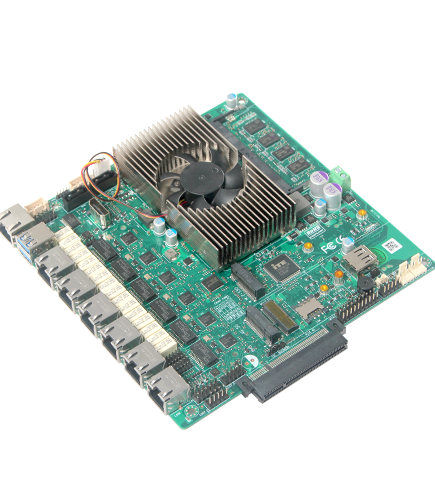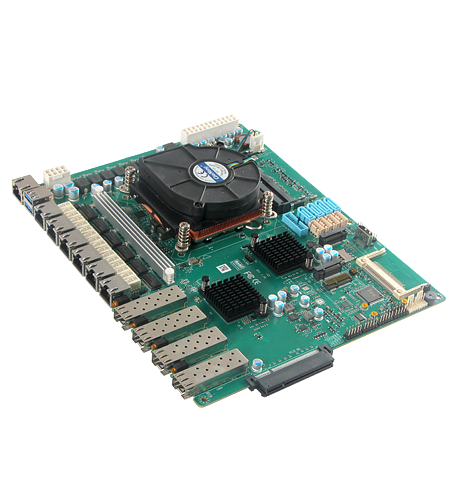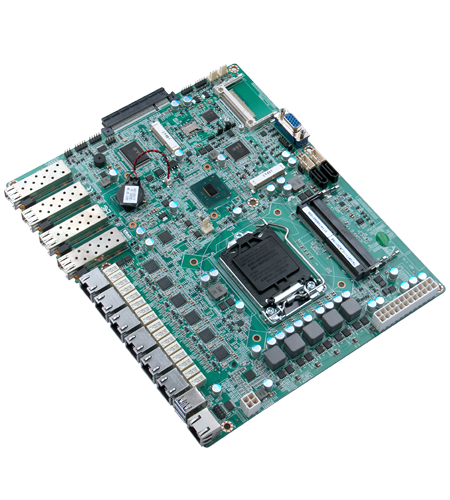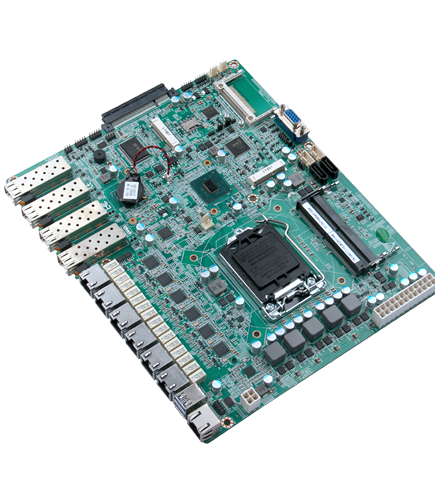
PIESIA, vodeća nacionalna tvrtka visoke tehnologije, posvećena je istraživanju, razvoju, proizvodnji, prodaji i postprodajnim uslugama industrijskih kontrolnih matičnih ploča, kompletnih strojeva, računala i srodnih proizvoda. Naša stručnost u industriji omogućila nam je da postanemo pouzdano ime kada su u pitanju matične ploče za poslužitelje.
U PIESIA-i razumijemo da je pouzdana matična ploča poslužitelja ključna za nesmetan rad bilo kojeg sustava poslužitelja. Zato nudimo širok raspon matičnih ploča za poslužitelje koje su dizajnirane da zadovolje različite potrebe naših klijenata. Naše matične ploče poslužitelja izrađene su od visokokvalitetnih komponenti i rigorozno su testirane kako bi se osigurala njihova pouzdanost i trajnost. Također nudimo prilagođena rješenja koja zadovoljavaju specifične zahtjeve naših klijenata.

PIESIA je državna visokotehnološka tvrtka specijalizirana za istraživanje, razvoj, proizvodnju i prodaju industrijskih matičnih ploča, kompletnih strojeva, računala i srodnih proizvoda nakon prodaje. U području matičnih ploča za poslužitelje PIESIA je uvijek bila lider kada su u pitanju kvaliteta i pouzdanost. Pokušajmo sada shvatiti zašto je PIESIA postao glavni brend za matične ploče za poslužitelje.
Kada je riječ o matičnim pločama poslužitelja, PIESIA nudi niz visokoučinkovitih i izdržljivih rješenja prilagođenih industrijskim postavkama. Naše matične ploče poslužitelja imaju stabilnost i snagu potrebnu za kritične aplikacije kroz vrhunsku tehnologiju i strogu kontrolu kvalitete. Ovo osigurava besprijekoran rad i optimalnu izvedbu za podatkovne centre, sustave automatizacije kao i nadzorne mreže s matičnim pločama za spajanje PIESIA-e.

PIESIA je specijalizirana za matične ploče poslužitelja visokih performansi za industrijska okruženja. Uz našu predanost razvoju i poboljšanju naših proizvoda, postali smo najbolji proizvođač računalnih rješenja. Stoga je PIESIA idealna marka hardvera koji je namijenjen učinkovitom radu u teškim uvjetima.
Matične ploče poslužitelja koje proizvodi PIESIA su čvrste i štede energiju. U današnjem nepredvidivom svijetu ključno je stvoriti prilagodljivu tehnologiju koja može podržati više procesora i konfiguracija, što i činimo putem naših proizvoda. Svaka matična ploča pomno je izrađena uz mukotrpne aktivnosti istraživanja i razvoja od strane PIESIA inženjera koji se brinu da proizvod odgovara ekskluzivnim zahtjevima svakog poslovnog partnera.

PIESIA, kao eminentno nacionalno visokotehnološko poduzeće, specijalizirana je za istraživanje, razvoj, proizvodnju, prodaju i sveobuhvatnu postprodajnu uslugu matičnih ploča poslužitelja posebno skrojenih za aplikacije industrijske kontrole. Naša nepokolebljiva predanost kvaliteti i inovacijama stavlja nas na čelo među proizvođačima koji nude robusna i pouzdana rješenja za matične ploče. Pažljivo projektiramo matične ploče poslužitelja koje mogu pružiti optimalnu izvedbu u ekstremnim okruženjima čime osiguravamo trajnost i stabilnost koji su ključni aspekti najsloženijih industrijskih procesa.
Naša ključna kompetencija leži u izradi matičnih ploča poslužitelja temeljenih na vrhunskoj tehnologiji koje se strogo pridržavaju standarda usklađenosti u PIESIA-i. Bilo da se radi o sustavima automatizacije, prikupljanju podataka ili operacijama kritičnim za misiju, naši proizvodi imaju poboljšanu pouzdanost kao i fleksibilnost. Ove su matične ploče izrađene s preciznošću i skalabilnošću kako bi se besprijekorno uklopile u mnoga industrijska okruženja, a istovremeno zadržale svoju učinkovitost tijekom svog životnog ciklusa. Osiguravajući da predviđamo razvojne trendove unutar ove sfere aktivnosti kroz dobro obučen istraživački i razvojni tim; naše matične ploče poslužitelja specificirane su danas zajedno sa zahtjevima sutrašnjice

PIESIA je renomirana nacionalna visokotehnološka tvrtka specijalizirana za istraživanje, razvoj, proizvodnju, prodaju i postprodajne usluge industrijskih kontrolnih matičnih ploča, kompletnih sustava, računala i drugih povezanih proizvoda. U ovom ćemo članku istražiti domenu matičnih ploča za poslužitelje i pokazati zašto PIESIA briljira u ovom području.
Kada je riječ o matičnim pločama za poslužitelje, uvijek možete računati na pouzdanost PIESIA-e i korištenje najsuvremenije tehnologije. Za naše matične ploče poslužitelja brine se toliko rigorozno da mogu besprijekorno raditi čak i u najtežim uvjetima. To rezultira nepopustljivom predanošću najnovijim dostignućima kao i strogim kontrolama nad kvalitetom za proizvodnju matičnih ploča za poslužitelje čije su izvođenje, stabilnost i dugovječnost neusporedivi. Za svoje potrebe industrijskih poslužitelja vjerujte PIESIA-i i osjetite razliku u našoj robnoj marki.

Shenzhen ZunSia Intelligent Technology Co., Ltd. Osnovana 2009., tvrtka je nacionalno visokotehnološko poduzeće usmjereno na istraživanje, razvoj, proizvodnju, prodaju i postprodajne usluge industrijskih matičnih ploča, kompletnih strojeva, računala i srodnih proizvoda, s 14+ godina iskustva u industriji.
Kupcima pružamo Sveobuhvatne prilagođene usluge , Naši proizvodi nalaze široku primjenu u industrijskoj automatizaciji, komunikacijskoj opremi, energetskim sustavima, mrežnoj sigurnosti, inteligentnom transportu, videonadzoru, zdravstvu, obrani, zrakoplovstvu, samoposlužnim terminalima, uređajima za pohranu, digitalnim natpisima, ugrađenim računalima, potrošačkoj elektronici itd. .
Više od 10 godina iskustva u industriji, izvoz u 23 zemlje.
Usluga na jednom mjestu za proizvode kako bismo vam pružili proizvode više kvalitete.
Da bismo vam pružili odgovarajuća rješenja za proizvode.
Vodeća temeljna tehnologija u industriji, posvećenost detaljima, stroga kontrola kvalitete.
Matična ploča poslužitelja je specijalizirana matična ploča dizajnirana za korištenje u poslužiteljima ili računalnim sustavima visokih performansi. Pruža značajke i mogućnosti optimizirane za aplikacije poslužitelja, kao što su višestruke CPU utičnice, veliki kapacitet memorije i opsežna I/O povezivost.
Prednosti korištenja matične ploče poslužitelja uključuju podršku za više CPU-a, veći kapacitet memorije, poboljšane značajke pouzdanosti i stabilnosti te opsežne I/O mogućnosti. Ove značajke omogućuju poslužiteljima da se nose sa zahtjevnim radnim opterećenjima, pružaju skalabilnost i osiguravaju učinkovitu obradu podataka.
Iako matične ploče poslužitelja tehnički mogu podržati igranje, one nisu za to optimizirane. Matične ploče za igranje često nude značajke specifične za igranje, kao što su mogućnosti overklokiranja i napredna grafička podrška. Preporuča se koristiti matičnu ploču posebno dizajniranu za igranje za najbolje iskustvo igranja.
Matične ploče poslužitelja obično imaju razne utore za proširenje, kao što su utori za PCIe (Peripheral Component Interconnect Express), za dodavanje dodatnih mrežnih kartica, kontrolera za pohranu ili drugih kartica za proširenje. Konkretan broj i vrsta utora za proširenje može varirati ovisno o modelu matične ploče.
